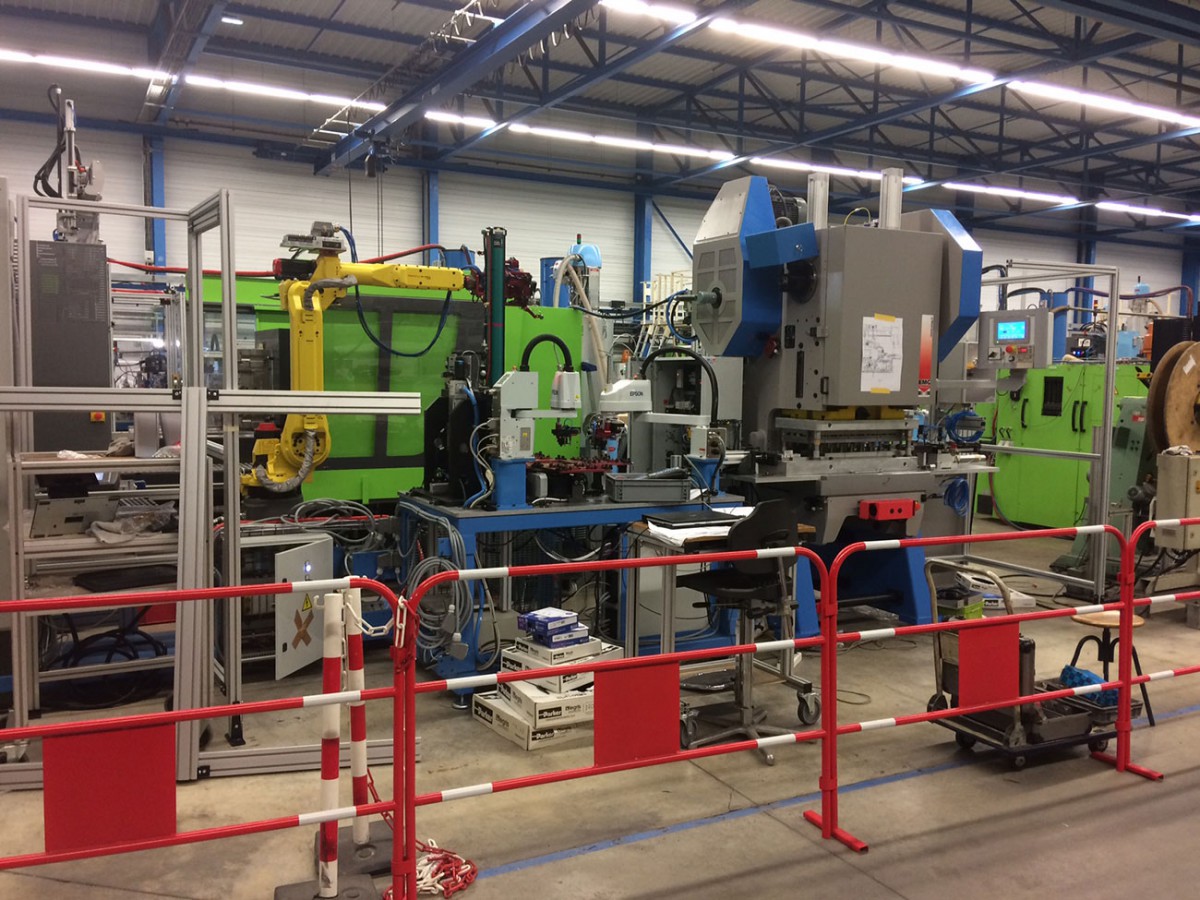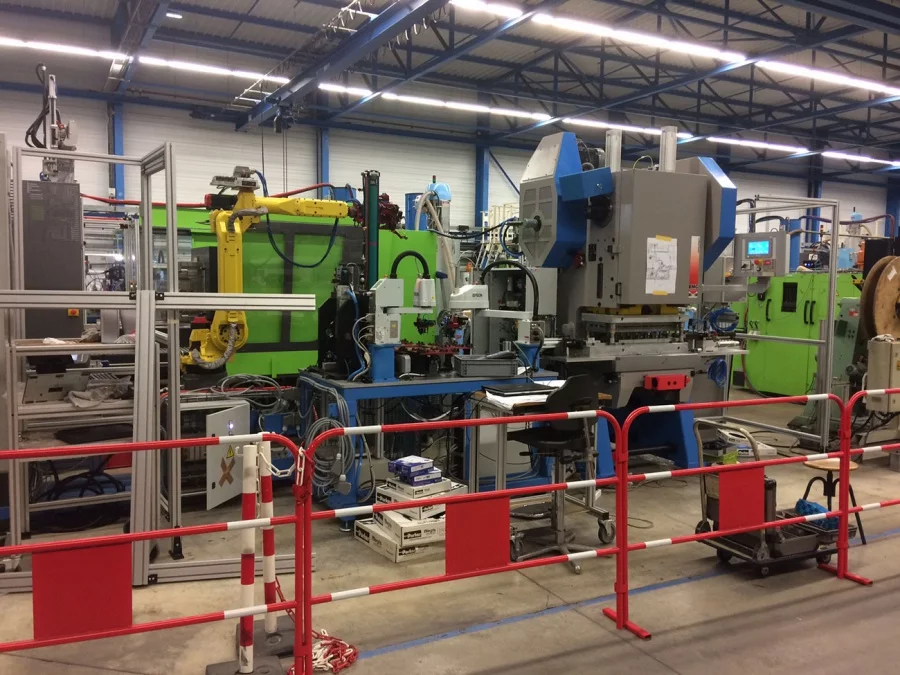R&D - Special production presses
Special presses integrated into production lines
Our standard mechanical presses can be customized to meet the constraints determined in our clients’ specifications. In order for our presses to fit better into full production lines, we take into account two criteria, namely :
- The size of the press and its production performance characteristics,
- Integrating the press into the manufacturing line, a line that is controlled by a man-machine interface that ensures that the entire production chain operates properly.
In the specific case of manufacturing a press for a production line, our clients are generally worldwide machine manufacturers that possess all the technologies required for the manufacture of the part from the raw materials through to the finished product.
Specific functions and capacities for efficient presses
When we study project specifications, which are generally prepared by an R&D department, we determine which of our standard machine components are adapted and which other functions and capabilities must be adapted.
This way we can adjust:
- Command functions,
- Control functions,
- Rate and speed functions.
We can also modify specific factors with regard to the interface being used, production capacity and safety components.
Du sur mesure pour un besoin spécifique
The big names in Swiss watchmaking have been placing their trust in us for decades. We have developed a line of mechanical presses that are adapted to their needs. Some of our precision manufacturing customers include: Rolex, Blancpain, Bovet, Bulgari, Swatchgroup, ETA and all the big names in Swiss watchmaking.
Some of the modifications we can make include:
- The addition of a compression spring on the slider to reduce mechanical play to a minimum and thus increase precision and repeatability of the cycle
- Operator protection using light curtains that are automatically raised with lateral grates, making it possible for the adjuster to have a space that is completely open for the placement and adjustment of tools
- The addition of a wooden plate that is ergonomically adapted to the work station with a height defined by the client, so that a parts locker can be installed
- The modification of the work table with just two T-grooves for hanging tools, thus making the station easier to clean
- The installation of height-adjustable LED neon tube lighting to provide a proper view of the tool when the part is being installed
- The construction of a frame with straight sides to enclose all the components of the press in order to make cleaning easier (electrical cabinet, air handling system, centralized lubrication system, etc.)
- Man-machine interface with a touch-screen for easy, customizable control of the press
- And, in some cases, the addition of a USB port for charging a telephone or accessory
- ….
The watch press, which is dedicated to a specific market, is still “customized” for each client in order to respond to specific demands.
Thanks to their expertise and their desire to adapt to market needs, EMG will find the solution that meets all your manufacturing requirements.
Interview with Stéphane LONG by TÔLERIE MAGAZINE - February 2022
Here are a few extracts from the CEO of LONG SAS, published as part of a comprehensive feature on press manufacturers in this magazine.
Structuring the specifications to define a production press
It is essential not to overlook a critical point: in addition to the type of press chosen, its power, speed, precision, repeatability, tool sizes and speeds, "It is also important to define the adjustment facilities required during series changes, in terms of tool position, strokes, stops, non-return system, automatic feed, etc., as well as the operating modes and speed of movement".
People at the heart of the process
"The ergonomics and safety of the workstation are also fundamental elements to be taken into account, as they are the best way of preserving the physical integrity of both the setter and the operator... The safety of the personnel using the production equipment, the cost price of the parts produced, and the reliability and responsiveness of the manufacturer in responding to requests all seem to me to be essential factors in the choice".
Building up a reserve of power to adapt to emerging markets
This means anticipating new materials and different part sizes... "The vast majority of the presses we supply are increasingly customised and sophisticated... we are approached by established companies as well as start-ups that want to position themselves on new parts and upgrade their machinery".
The factory of the future: networking presses
"The automation of production processes must be taken into account as soon as the specifications are drawn up, with the minimum decision being a predisposition to future automation.... effort, displacement, position, distance, heat, etc." . The management of production data as part of the digitisation of the factory brings with it a host of parameters that need to be integrated, whether for the continuous monitoring of parts produced or for the implementation of preventive maintenance.
Published with the kind permission of TÔLERIE MAGAZINE magazine
Subscribers to this publication can access the full article

Integration of an 80t press with an upstream feeder, 2 robotic manipulators (EPSON) at the outlet, and a plastic injection press with a robot.


